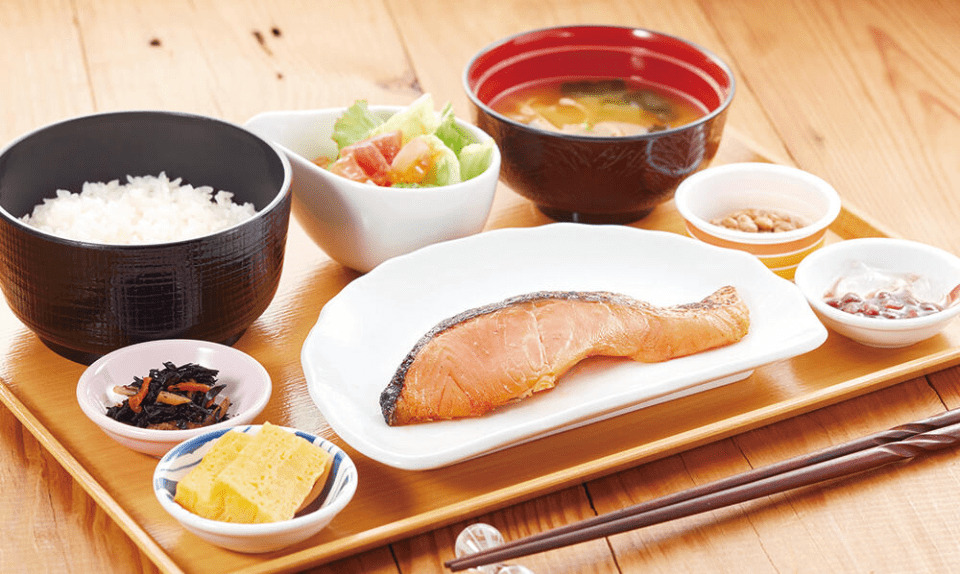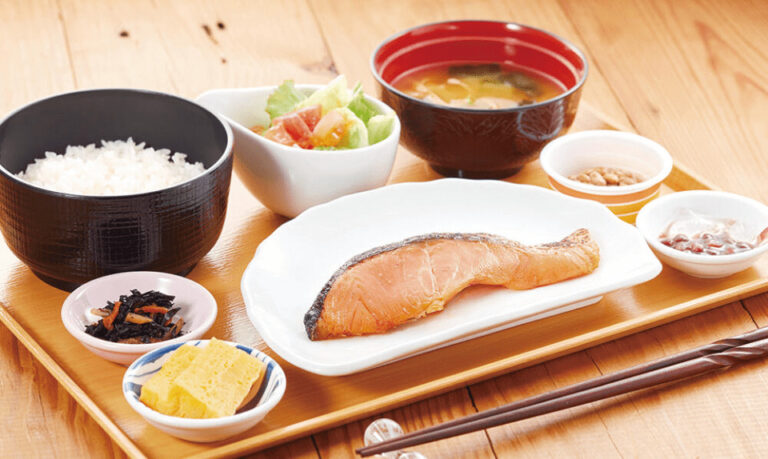

The Japanese Breakfast: A Personal Story
Upon arriving in Japan in 2016, I became fascinated with the country’s food culture. Despite my admiration for Japanese cuisine, I had never experienced it in its authentic form. My curiosity led me to discover the history and cultural significance behind each dish and how they reflected the lifestyle and values of the Japanese people. One aspect that particularly piqued my interest was the breakfast habits of the Japanese.
Before my arrival, I had heard that the Japanese had a distinctly different breakfast than I was accustomed to. I typically have a quick, simple breakfast such as cereal, toast, or yogurt. Occasionally, I would forgo breakfast or grab a pastry and coffee to work. I never considered the significance or purpose of breakfast, as it was just a means to start the day.
However, I discovered that breakfast is much more than that in Japan. It is a way to nourish the body and soul, express gratitude and respect, and connect with nature and tradition. Significantly, it is an integral part of daily life.
In 2018, a native Japanese friend who had lived in one of the cities in Nagano prefecture for a long time invited me to his home to teach me how to prepare an authentic Japanese breakfast. He explained that it was a typical breakfast many Japanese people consume daily and that it was both easy and healthy. I was thrilled and eager to learn, so I accepted his invitation.
He explained that a traditional Japanese breakfast comprised four key elements: rice, soup, protein, and side dishes. Also, he emphasized that these components provide a balanced and complete meal, supplying sufficient energy and nutrients for the day. Similarly, he noted that these components could vary depending on the season, region, and individual preference.
During our talk, he demonstrated how to prepare each component and provided insight into why they were selected and how they were traditionally consumed.
Rice
Japanese people love rice and eat it at every meal, including breakfast. It is considered sacred and essential, as it represents life and abundance. Usually, it is steamed in a rice cooker, which keeps it warm and fluffy. In Japan, you can eat rice plain or sometimes mixed with other ingredients, such as natto (fermented soybeans), furikake (rice seasoning), or nori (dried seaweed). Then, you can eat it with chopsticks, and it is polite to hold the rice bowl close to the mouth and finish every grain.
My friend told me he usually eats rice with natto for breakfast, as it is a high-protein and low-calorie dish for digestion and immunity. He said that natto is a traditional food in Japan that is made by fermenting soybeans with healthy bacteria. Furthermore, he noted that natto has a strong smell and a slimy texture and that some people love it and others hate it.
Below are the steps that he showed me on how to make natto rice:
- First, he opened a pack of natto from the fridge.
- Next, he added a small packet of mustard and a slight soy sauce container with the natto and stirred it well.
- Then, he took a bowl of steamed rice and scooped some natto on top of it.
- Finally, he mixed it well and sprinkled some chopped green onion.
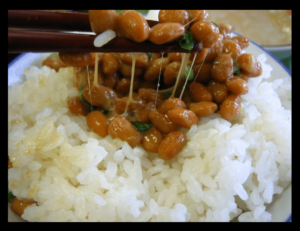

After he made it, he handed me a pair of chopsticks and invited me to try it. Initially, I was slightly nervous, as I had never eaten natto. I smelled it, and it was indeed pungent. Then I took a bite, and it was indeed slimy. But it was also surprisingly tasty.
Generally, the natto is nutty and savory, the mustard is spicy and tangy, the soy sauce is slightly salty, and the rice is soft and sweet. Similarly, the green onion is fresh and crunchy—the flavors and textures blend in a complex and satisfying way, which I like.
Soup
Soup is another essential part of a Japanese breakfast, providing hydration and warmth. It is usually made from dashi, which is a broth made from kombu (kelp) and katsuobushi (bonito flakes) and flavored with soy sauce, mirin (sweet rice wine), and salt. Moreover, it can contain various ingredients, such as tofu, seaweed, mushrooms, vegetables, or fish. You can eat soup with a spoon, and it is polite to sip it directly from the bowl and make a slurping sound.
My friend told me that he usually eats miso soup for breakfast, as it is a traditional and nutritious soup that is good for the skin and the stomach. Also, he said it could have different ingredients, depending on the season and the person’s preference.
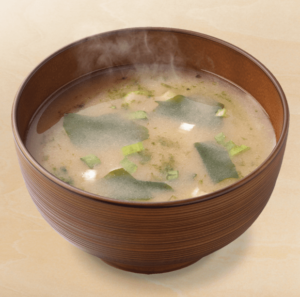

Interestingly, he showed me how to make miso soup:
- First, he took a pot and added water and a piece of kombu.
- Secondly, he brought it to a boil and then lowered the heat.
- Thirdly, he added some katsuobushi and simmered it for a few minutes.
- At this time, he strained the dashi and returned it to the pot. He added some tofu, wakame (seaweed), and green onion, bringing it to a boil again.
- Lastly, he turned off the heat and added some miso, stirring it well.
He poured the miso soup into a bowl and handed me a spoon. I was eager, as I had always liked miso soup. Initially, I smelled it, which was aromatic, then tasted it. As it was expected, it was delicious!
The miso soup is warm and comforting, with a clear and flavorful dashi. Moreover, this soup is smooth with soft and silky tofu, tender and salty wakame, and bright and sharp green onion. The flavors and textures complement each other, and I love it!
Protein
Protein is essential to a Japanese breakfast, providing strength and stamina from various sources, such as fish, eggs, meat, or soybeans. It can be cooked in different ways, such as grilled, fried, boiled, or steamed. Likewise, it can be seasoned with various sauces, such as soy sauce, teriyaki sauce, or vinegar.
My friend told me that he usually eats grilled fish for breakfast, as it is a traditional and healthy dish that is good for the heart and the brain. He said grilled fish is a typical breakfast in Japan and can be any kind of fish, such as salmon, mackerel, or sardine. Also, he noted that grilled fish has a simple and fresh flavor and is easy to make.
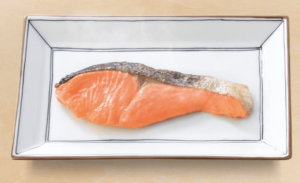

He then showed me how to make grilled fish.
- First, he rinsed a piece of salmon under cold water.
- Then, he patted it dry with a paper towel and sprinkled salt on both sides.
- Next, he placed it on a grill pan and cooked it over medium-high heat for a few minutes on each side until it was golden and flaky.
- Finally, he transferred it to a plate and squeezed some lemon juice.
Happily, he handed me a pair of chopsticks and invited me to try it. I looked at it, and it was appetizing. Then, I took a bite and was surprised at how terrific it was without frying it with cooking oil. It was tender, juicy, subtle, and savory! Surprisingly, the lemon juice was zesty and refreshing, adding flavor and texture to the grilled fish.
Side Dishes
Side dishes are the final component of a Japanese breakfast, as they provide variety and balance. They can be any food, such as pickles, salad, fruit, or bread. Also, side dishes can be sweet or savory, hot or cold, raw or cooked. You can also eat them with chopsticks, a fork, a spoon, or a hand. Moreover, they can be chosen according to the season, mood, or occasion.
My friend told me he usually eats pickles and salad for breakfast, as they are refreshing and cleansing dishes for digestion and appetite. Also, he said that pickles are a traditional food in Japan that was made by preserving vegetables, such as cucumber, radish, or eggplant, in salt, vinegar, miso, or soy sauce. Pickles have a sour and crunchy taste and can last long.
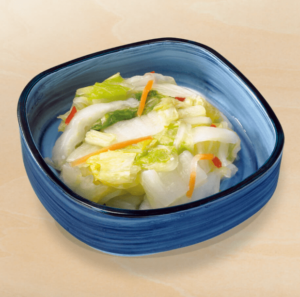

He added that salad was a modern food in Japan that is made by tossing fresh vegetables, such as lettuce, tomato, or carrot, with dressing, such as mayonnaise, vinegar, or sesame. Furthermore, salad has a crisp and refreshing taste and can be varied with different ingredients and condiments.
He served me flavorful pickles and salad. The pickles were sour and crunchy. Also, the salad was crispy and creamy with sweet and juicy cherry tomatoes and soft and rich eggs. Undoubtedly, the flavors and textures contrasted and balanced each other pleasantly and refreshingly, which I like.
Conclusion
In conclusion, the Japanese breakfast provides a balanced and complete meal with enough energy and nutrients for the day. It also reflects Japan’s culture and history and the people’s lifestyle and values. But there are other breakfasts that Japan has to offer. There are many different types of breakfast that Japanese people eat, such as Western-style breakfast, which includes bread, butter, jam, eggs, bacon, and coffee, or fusion-style breakfast, which combines elements of both Japanese and Western cuisines, such as toast with natto, or pancakes with green tea. All breakfasts have pros and cons, so choose the one that best suits your needs and lifestyle.
So, what do Japanese people eat in the morning? The answer is it depends. It depends on the person, the place, the time, and the occasion. But whatever they eat, they do so with gratitude, respect, joy and satisfaction, health and happiness. They eat it with a sense of living. That’s what I learned from my friend, and that’s what I want to share with you.
I hope this article has helped you. If you have any questions or comments, feel free to leave them below. Thanks for reading, and I’ll see you at the next one.

